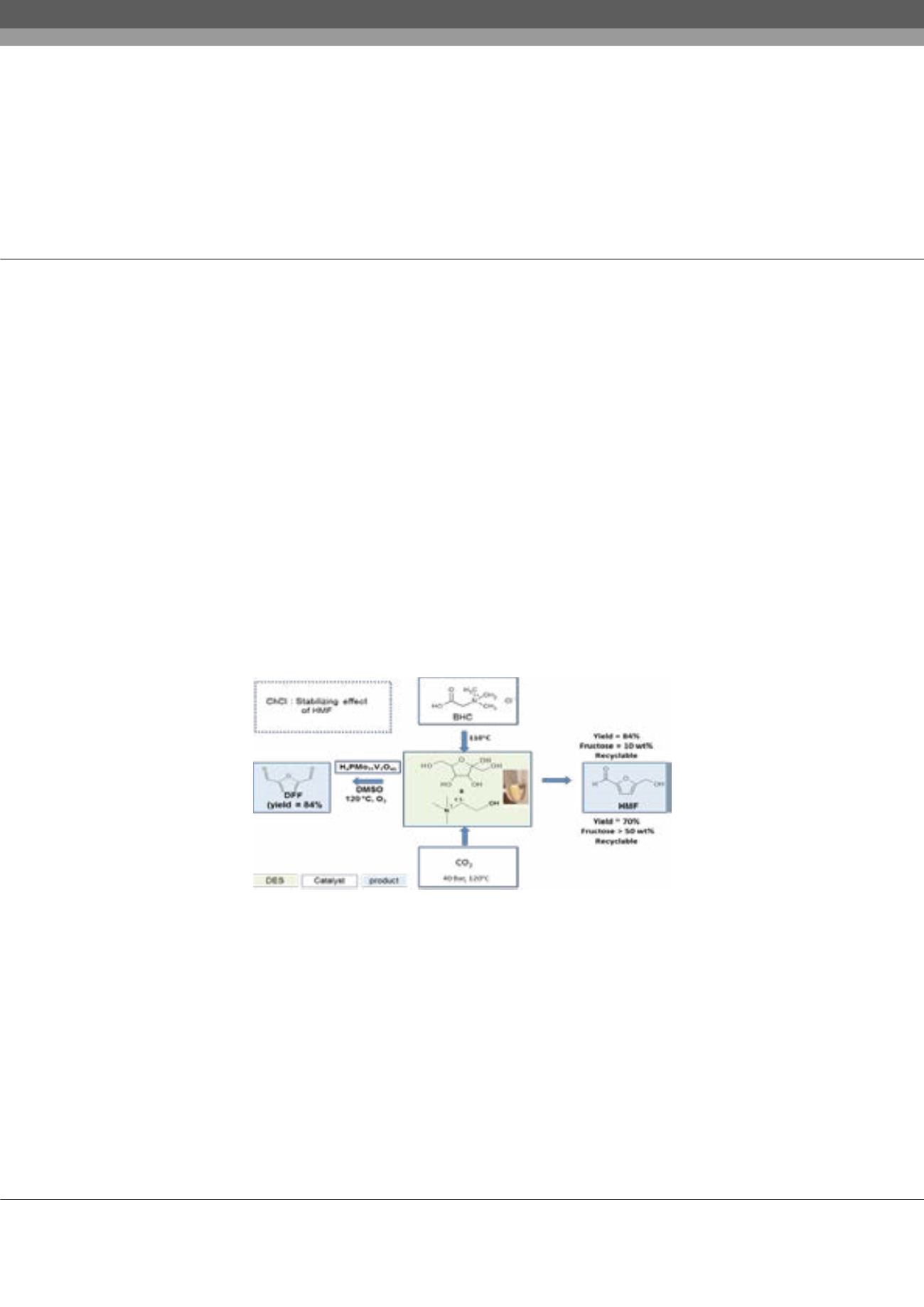

Notes:
Volume 3, Issue 2 (Suppl)
Trends in Green chem
ISSN: 2471-9889
Environmental & Green Chemistry 2017
July 24-26, 2017
Page 22
5
th
International Conference on
6
th
International Conference on
July 24-26, 2017 Rome, Italy
Environmental Chemistry and Engineering
Green Chemistry and Technology
&
Catalytic conversion of carbohydrates in presence of choline chloride: Use of deep eutectic solvents
Karine de Oliveira Vigier
and
François Jérôme
University of Poitiers, France
T
he catalytic conversion of carbohydrates to value added chemicals or platform molecules is the topic of numerous researches.
One of the challenges is the use of a selective and stable catalyst, and also the nature of the solvent that allows the dissolution
of highly concentrated carbohydrates which is environmental friendly. An interesting class of solvents is gaining more and more
attention: Deep Eutectic Solvents (DES) or Low Melting Mixtures (LMM). Formation of these solvents can be obtained by simply
mixing together two safe components, (cheap, renewable and biodegradable) which are capable of forming a eutectic mixture or a
low melting mixture. One of the most widespread components used for the formation of these solvents is choline chloride (ChCl).
ChCl is a very cheap, biodegradable and non toxic quaternary ammonium salts which can be either extracted from biomass or readily
synthesized from fossil reserves (million metric tons) through a very high atom economy process. In combination with safe hydrogen
bond donors such as carbohydrates, ChCl is capable of rapidly forming a DES/LMM. We have studied several catalytic conversions
of carbohydrates. One of the reactions studied was the dehydration of fructose and glucose to produce 5-hydroxymethylfurfural. We
have shown that high yield to HMF can be obtained when ChCl was added to the carbohydrates. Moreover, concentrated solution of
carbohydrates could be used in some cases, which is a high advantage in the carbohydrates chemistry. Another reaction studied was
the catalytic conversion of fructose to diformylfuran (DFF) in a one pot process. In all these studies, it was shown that ChCl can help
control the selectivity of the reaction by providing interactions with the furanic derivatives avoiding their degradation. Some new
insights of the mechanism will be provided.
Figure 1:
Use of choline chloride for the catalytic conversion of carbohydrates
Biography
Karine de Oliveira Vigier has her expertise in heterogeneous catalysis, deep eutectic solvents, ionic liquids, renewable carbon. Her main field of research consists
of the development of unconventional media to assist the catalyst in the control of the selectivity for the conversion of biomass (carbohydrates, furanic derivatives,
and glycerol) to fine chemicals and fuels. After a PhD in catalytic conversion of vegetable oils in France, she moved to Canada for a Postdoctoral position. She is
now an Associate Professor at the Institute of Chemistry of Poitiers (IC2MP) in France since 2004. She has received the Young Researcher prize from the Catalysis
Division of the French Chemical Society and she is the member of the Editorial Advisory Board of the
ACS Sustainable Chemistry & Engineering
journal.
karine.vigier@univ-poitiers.frKarine de Oliveira Vigier et al., Trends in Green chem, 3:2
DOI: 10.21767/2471-9889-C1-002
















